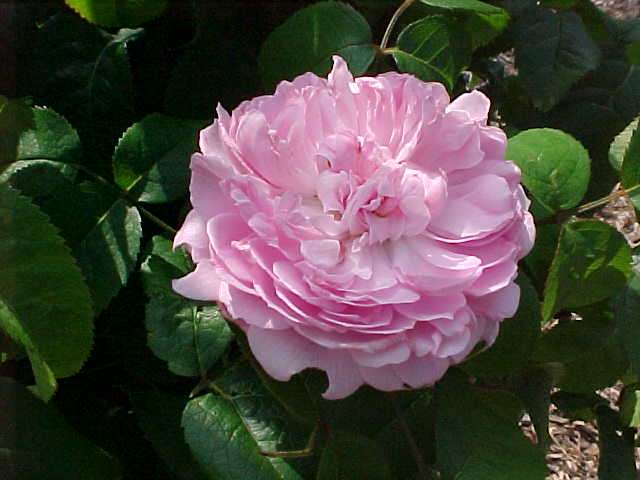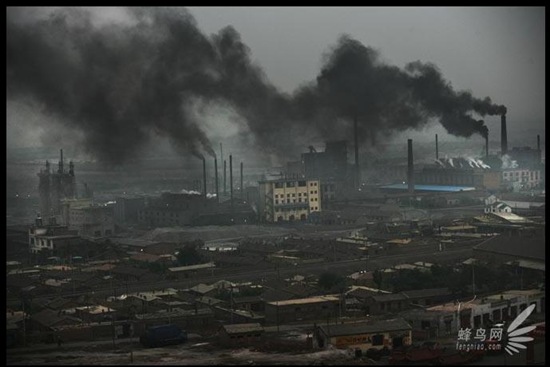Post by marchesarosa on Dec 24, 2009 10:50:57 GMT
The Role Of Soot Within the Climate In The Higher Latitudes And On “Global Warming”
There is an article in Scientific American by David Biello entitled
“Impure as the Driven Snow – Smut is a bigger problem than greenhouse gases in polar meltdown“.
The article states that
“Belching from smokestacks, tailpipes and even forest fires, soot—or black carbon—can quickly sully any snow on which it happens to land. In the atmosphere, such aerosols can significantly cool the planet by scattering incoming radiation or helping form clouds that deflect incoming light. But on snow—even at concentrations below five parts per billion—such dark carbon triggers melting, and may be responsible for as much as 94 percent of Arctic warming.
“Impurities cause the snow to darken and absorb more sunlight,” says Charlie Zender, a climate physicist at the University of California, Irvine. “A surprisingly large temperature response is caused by a surprisingly small amount of impurities in snow in polar regions.”
Zender, physicist Mark Flanner and other colleagues built a model to examine how soot impacts temperature in the Arctic and Antarctic regions. Temperatures in the northern polar region have already risen by 1.6 degrees Celsius (2.88 degrees Fahrenheit) since the dawn of the Industrial Revolution. The researchers incorporated information on soot produced by burning fossil fuels, wood and other biofuels, along with that naturally produced by forest fires and then checked their model predictions against global measurements of soot levels in polar snow from Sweden to Alaska to Russia and in Antarctica as well as in nonpolar areas such as the Tibetan Plateau.
The researchers also took into account the natural darkening of snow as it ages. “The larger crystals eat the smaller ones and get larger, and that means they get darker and absorb more sunlight,” Zender explains. “When soot is there it heats the snow. It acts like a little toaster oven.”
Whereas forest fires contribute to the problem—the effect noticeably worsens in years with widespread boreal wildfires—roughly 80 percent of polar soot can be traced to human burning, adding as much as 0.054 watt of energy per square meter of Arctic land, according to the research published this week in the Journal of Geophysical Research. When the snow melts, it exposes dark land below it, further accelerating regional warming. “Black carbon in snow causes about three times the temperature change as carbon dioxide in the atmosphere,” Zender says. “The climate is more responsive to this than [to] anything else we know.”
He argues that simple steps, such as fully burning fossil fuels in more efficient engines and using cleaner-burning cooking stoves, could help preserve the dwindling Arctic snow cover and ice …..Even changing the timing of such soot emissions could play a role. “If you have to burn dirty fuel, you can do it in the fall or winter” when it will be buried under subsequent snowfall, Zender says. “If you can time your emissions so they have the least impact then you will not trigger these very sensitive regions to start warming by this ice albedo feedback process.”
Unfortunately, the soot problem extends beyond snow, he says, noting that similar studies are needed to assess how the smut affects the melting of sea ice. That meltdown may be the impetus for an accelerating doom as it opens up shipping lanes previously blocked by ice in the Arctic Sea. “Those ships are great emitters of soot,” Zender points out, adding that, “putting a locally heavy source in the Arctic in the early spring,” is virtually guaranteed “to polish off the summer sea ice.”
The article states that
“…. on snow—even at concentrations below five parts per billion—such dark carbon triggers melting, and may be responsible for as much as 94 percent of Arctic warming”.
This article builds on a growing set of evidence on the major role of the deposition of soot on snow and ice as a contributor to radiative warming from what it would be in the absence of human activity. Climate Science has posted weblogs on this subject (e.g. see and see) and it is welcome that much needed attention is finally being given to this topic.
Thanks to Roger Pielke Sr, here
pielkeclimatesci.wordpress.com/2008/06/06/new-report-on-the-role-of-soot-on-the-climate-in-the-higher-latitudes-and-on-global-warming/
There is an article in Scientific American by David Biello entitled
“Impure as the Driven Snow – Smut is a bigger problem than greenhouse gases in polar meltdown“.
The article states that
“Belching from smokestacks, tailpipes and even forest fires, soot—or black carbon—can quickly sully any snow on which it happens to land. In the atmosphere, such aerosols can significantly cool the planet by scattering incoming radiation or helping form clouds that deflect incoming light. But on snow—even at concentrations below five parts per billion—such dark carbon triggers melting, and may be responsible for as much as 94 percent of Arctic warming.
“Impurities cause the snow to darken and absorb more sunlight,” says Charlie Zender, a climate physicist at the University of California, Irvine. “A surprisingly large temperature response is caused by a surprisingly small amount of impurities in snow in polar regions.”
Zender, physicist Mark Flanner and other colleagues built a model to examine how soot impacts temperature in the Arctic and Antarctic regions. Temperatures in the northern polar region have already risen by 1.6 degrees Celsius (2.88 degrees Fahrenheit) since the dawn of the Industrial Revolution. The researchers incorporated information on soot produced by burning fossil fuels, wood and other biofuels, along with that naturally produced by forest fires and then checked their model predictions against global measurements of soot levels in polar snow from Sweden to Alaska to Russia and in Antarctica as well as in nonpolar areas such as the Tibetan Plateau.
The researchers also took into account the natural darkening of snow as it ages. “The larger crystals eat the smaller ones and get larger, and that means they get darker and absorb more sunlight,” Zender explains. “When soot is there it heats the snow. It acts like a little toaster oven.”
Whereas forest fires contribute to the problem—the effect noticeably worsens in years with widespread boreal wildfires—roughly 80 percent of polar soot can be traced to human burning, adding as much as 0.054 watt of energy per square meter of Arctic land, according to the research published this week in the Journal of Geophysical Research. When the snow melts, it exposes dark land below it, further accelerating regional warming. “Black carbon in snow causes about three times the temperature change as carbon dioxide in the atmosphere,” Zender says. “The climate is more responsive to this than [to] anything else we know.”
He argues that simple steps, such as fully burning fossil fuels in more efficient engines and using cleaner-burning cooking stoves, could help preserve the dwindling Arctic snow cover and ice …..Even changing the timing of such soot emissions could play a role. “If you have to burn dirty fuel, you can do it in the fall or winter” when it will be buried under subsequent snowfall, Zender says. “If you can time your emissions so they have the least impact then you will not trigger these very sensitive regions to start warming by this ice albedo feedback process.”
Unfortunately, the soot problem extends beyond snow, he says, noting that similar studies are needed to assess how the smut affects the melting of sea ice. That meltdown may be the impetus for an accelerating doom as it opens up shipping lanes previously blocked by ice in the Arctic Sea. “Those ships are great emitters of soot,” Zender points out, adding that, “putting a locally heavy source in the Arctic in the early spring,” is virtually guaranteed “to polish off the summer sea ice.”
The article states that
“…. on snow—even at concentrations below five parts per billion—such dark carbon triggers melting, and may be responsible for as much as 94 percent of Arctic warming”.
This article builds on a growing set of evidence on the major role of the deposition of soot on snow and ice as a contributor to radiative warming from what it would be in the absence of human activity. Climate Science has posted weblogs on this subject (e.g. see and see) and it is welcome that much needed attention is finally being given to this topic.
Thanks to Roger Pielke Sr, here
pielkeclimatesci.wordpress.com/2008/06/06/new-report-on-the-role-of-soot-on-the-climate-in-the-higher-latitudes-and-on-global-warming/


